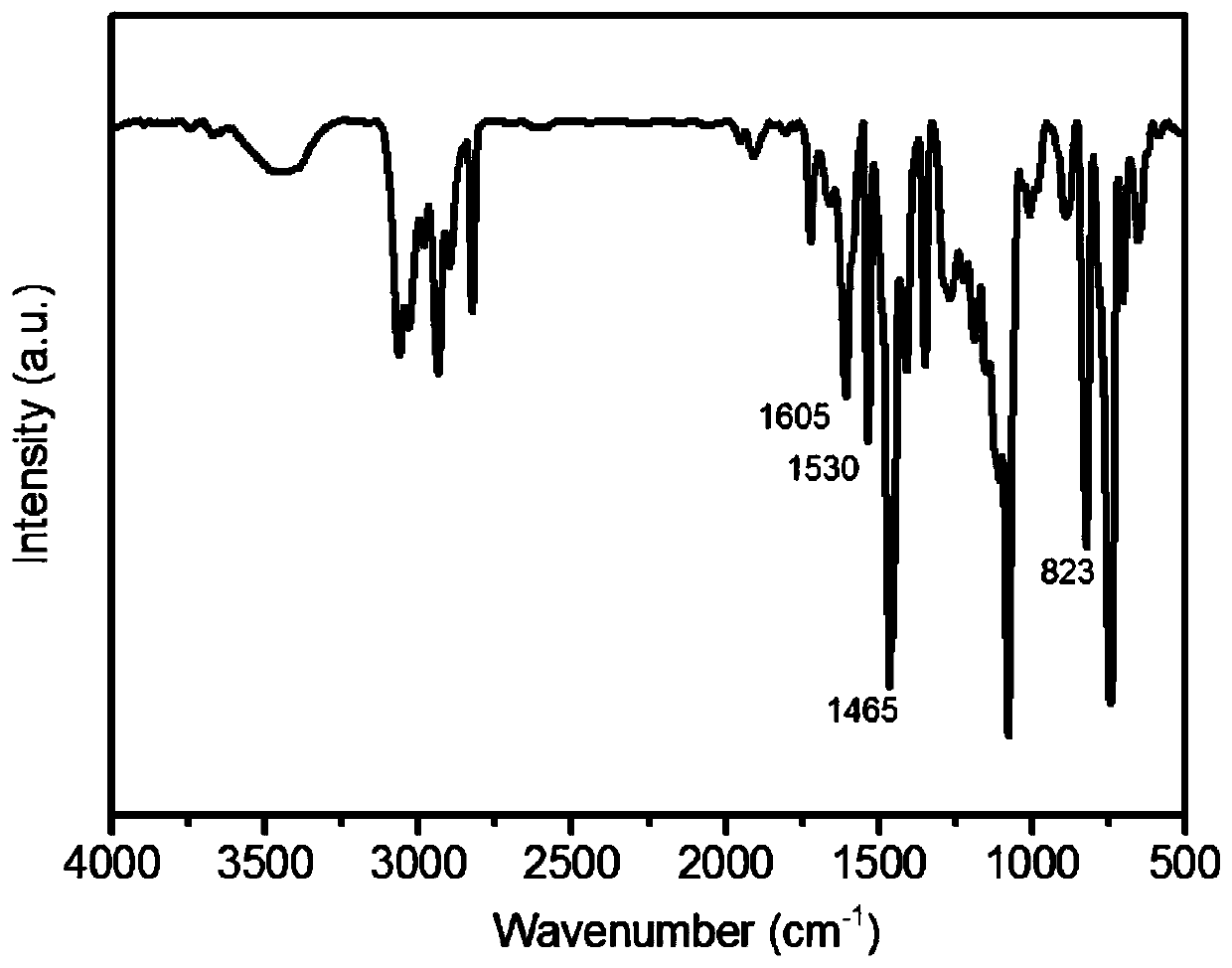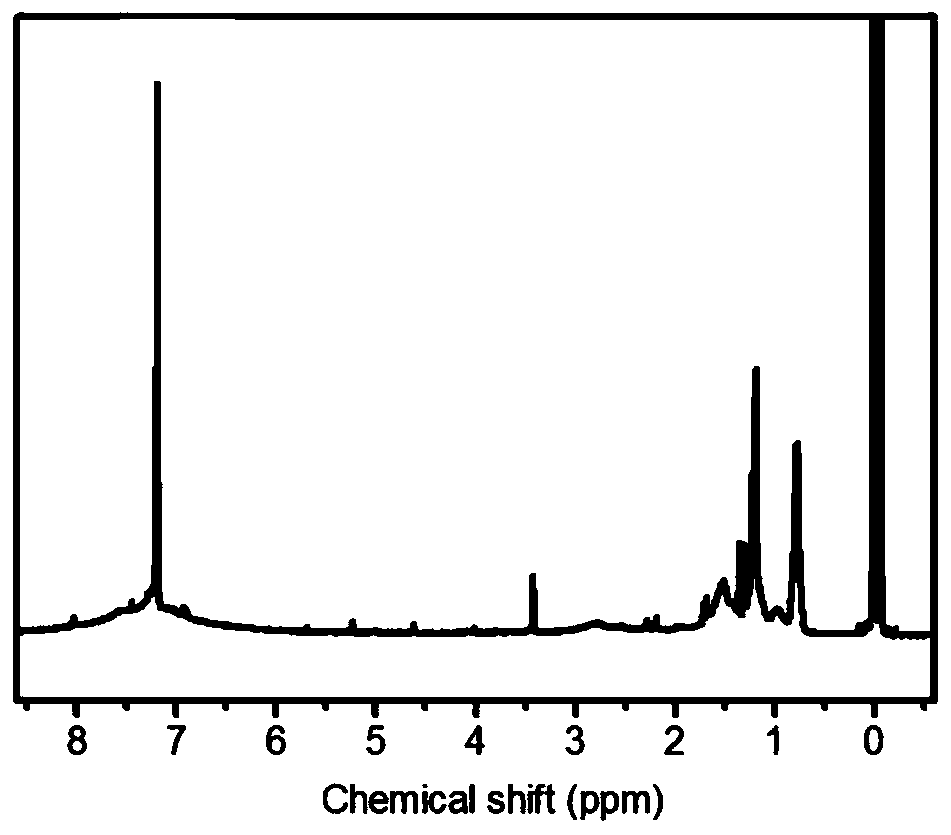A kind of soluble hyperbranched microporous organic polymer, its preparation method and application
A technology for polymers and compounds, applied in the directions of alkali metal compounds, chemical instruments and methods, separation methods, etc., can solve the problems of complex routes, difficult product properties to control, and high production costs, and achieve high specific surface area, easy operation, and low cost. Effect
- Summary
- Abstract
- Description
- Claims
- Application Information
AI Technical Summary
Problems solved by technology
Method used
Image
Examples
preparation example Construction
[0045] In the preparation method of the present invention, different diphenylhalomethane compounds can be used to obtain soluble microporous organic polymers containing different hyperbranched structures; changing the reaction time can improve the molecular weight, solubility and pore structure of the product. control.
[0046] The soluble hyperbranched microporous organic polymer provided by the present invention can be used as a gas storage material, a gas separation membrane or a chemical sensor due to its good solubility, unique fluorescence characteristics, high specific surface area and gas adsorption capacity. Material. As a gas storage material, the soluble hyperbranched microporous organic polymer can be used as a hydrogen storage material, a carbon dioxide capture and storage material and a methane storage material.
[0047] The preparation method of the hyperbranched microporous organic polymer provided by the present invention is simple and efficient, with low cos...
Embodiment 1
[0052] Add 960μL (1.19g) of dichlorodiphenylmethane into 5mL of 1,2-dichloroethane at 25°C, mix well and add 6.67g of anhydrous AlCl 3 , and then the temperature was slowly raised to 80°C, and the reaction was carried out at this temperature for 4 hours. After the reaction was finished, a reddish-brown oily crude product was obtained. The crude product was washed with dilute hydrochloric acid and methanol, and repeated three times to remove the residual solvent and catalyst. Then, the obtained solid was subjected to Soxhlet extraction with methanol for 48 hours, and finally dried under reduced pressure, and collected A soluble hyperbranched microporous organic polymer is obtained.
[0053] attached figure 1 The molecular structure diagram of the soluble hyperbranched microporous organic polymer prepared in Example 1 is given, which has an extended large π-conjugated skeleton, and the central carbon atom of the monomer unit is polymerized outward to form a hyperbranched molecu...
Embodiment 2
[0055] Add 890 μL (1.01 g) of diphenylchloromethane to 2 mL of nitrobenzene at 30 ° C, mix well and add 2.34 mL of anhydrous SnCl 4 , and then the temperature was slowly raised to 160°C, and the reaction was carried out at this temperature for 24 hours. After the reaction was finished, a reddish-brown oily crude product was obtained. The crude product was washed with dilute hydrochloric acid and methanol, and repeated three times to remove the residual solvent and catalyst. Then, the obtained solid was subjected to Soxhlet extraction with methanol for 72 hours, and finally dried under reduced pressure, collected A soluble hyperbranched microporous organic polymer is obtained.
[0056] Figure 11 , Figure 12 , Figure 13 , Figure 14 , Figure 15 and Figure 16 Respectively the molecular structure figure, infrared spectrum, 1 H liquid nuclear magnetic spectrum, gel permeation chromatography, fluorescence emission spectrum and thermogravimetric curve, Figure 17 and F...
PUM
 Login to View More
Login to View More Abstract
Description
Claims
Application Information
 Login to View More
Login to View More - R&D
- Intellectual Property
- Life Sciences
- Materials
- Tech Scout
- Unparalleled Data Quality
- Higher Quality Content
- 60% Fewer Hallucinations
Browse by: Latest US Patents, China's latest patents, Technical Efficacy Thesaurus, Application Domain, Technology Topic, Popular Technical Reports.
© 2025 PatSnap. All rights reserved.Legal|Privacy policy|Modern Slavery Act Transparency Statement|Sitemap|About US| Contact US: help@patsnap.com



